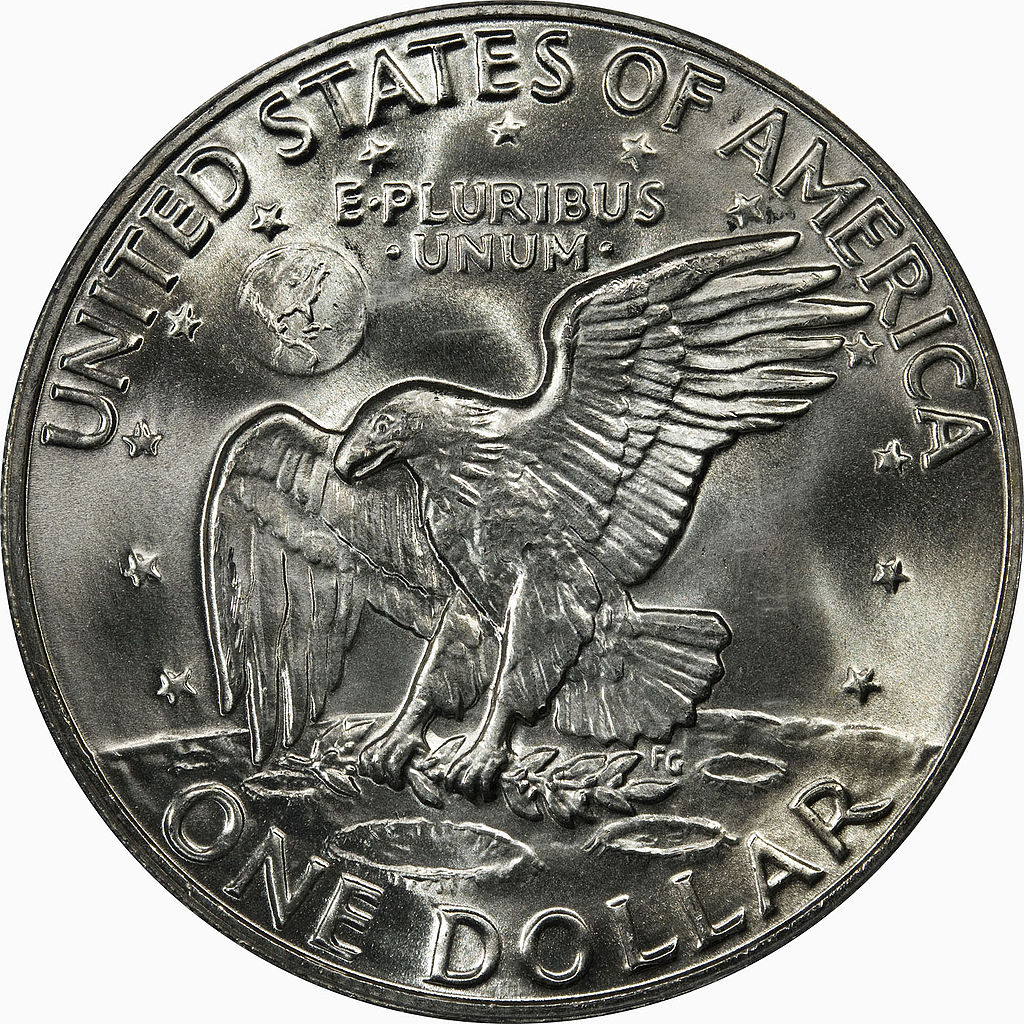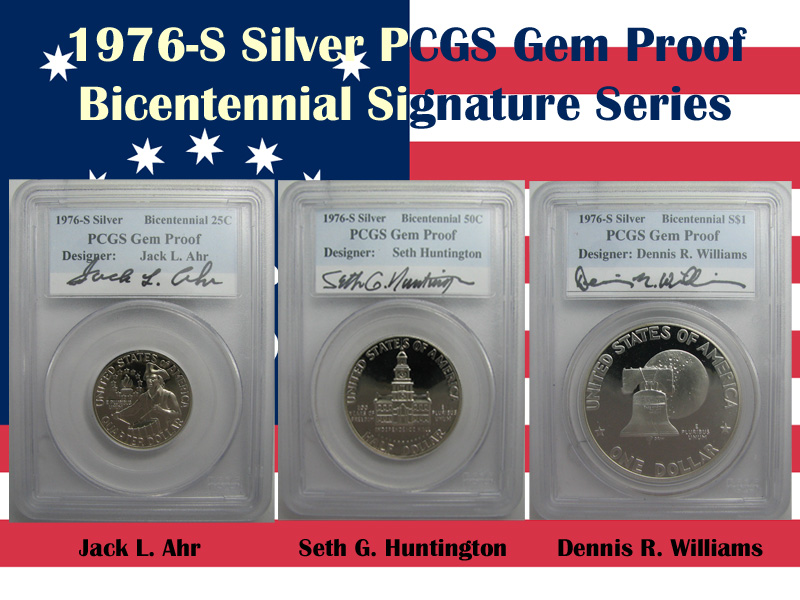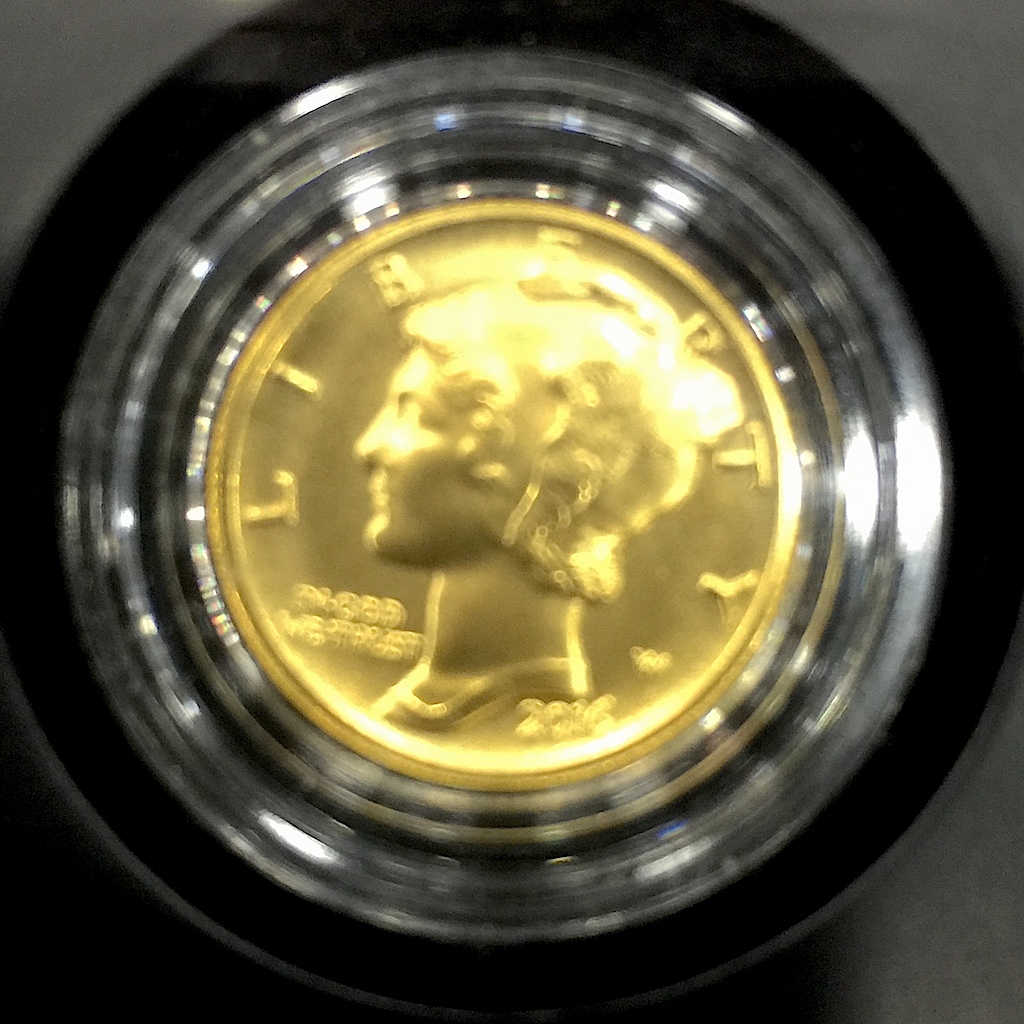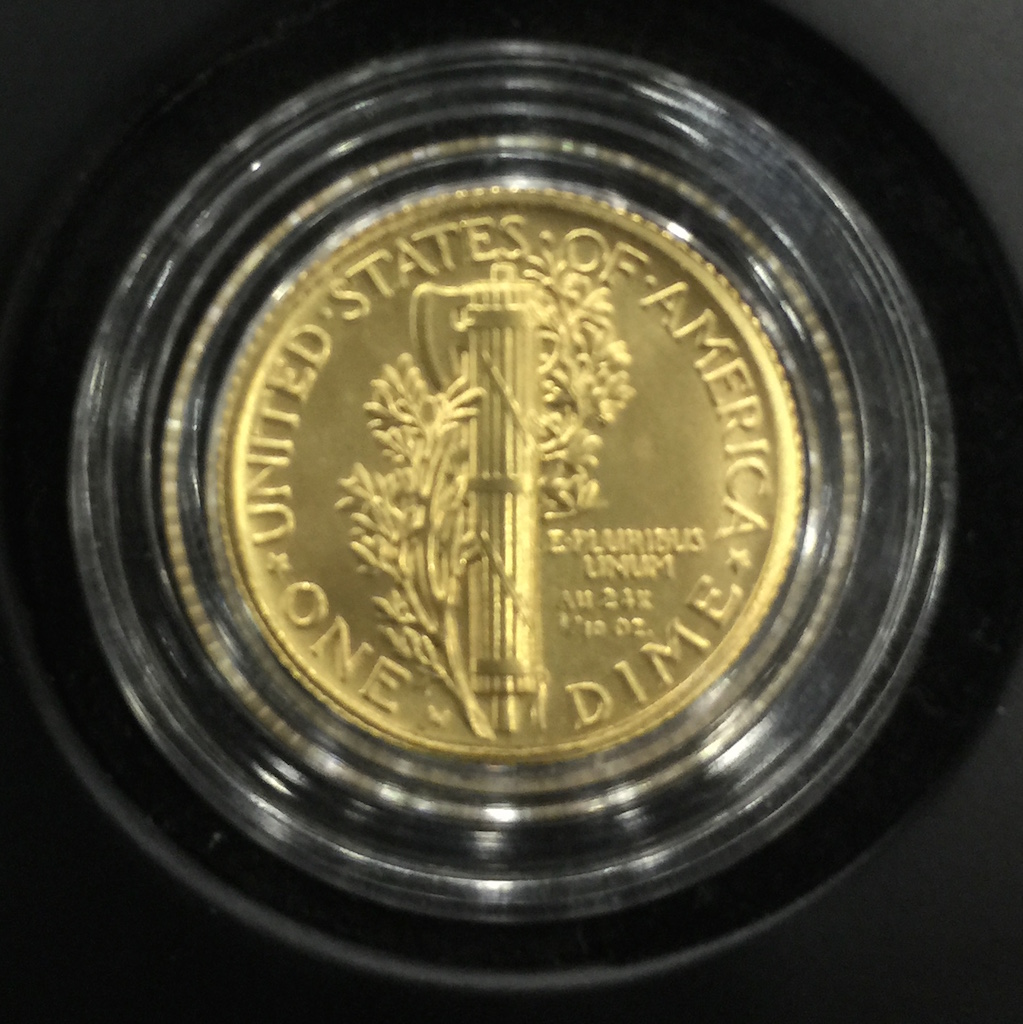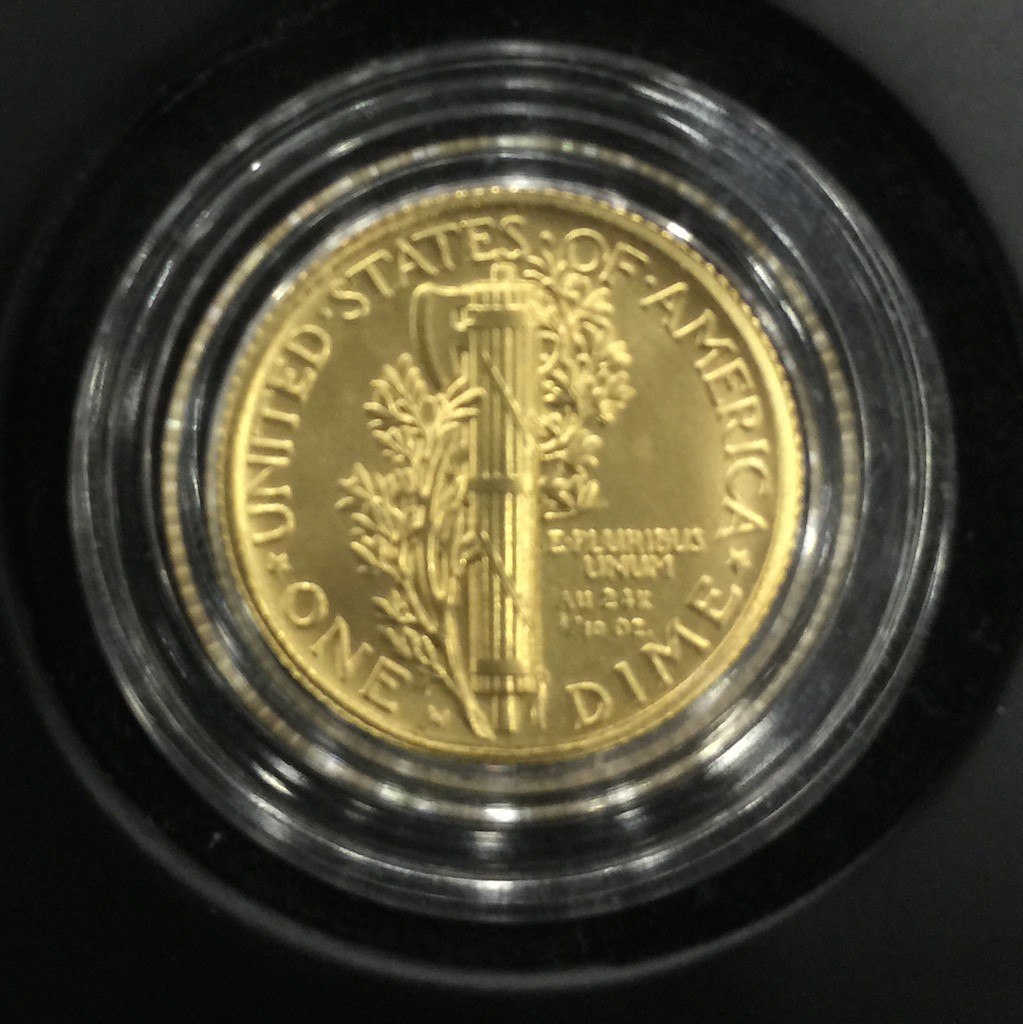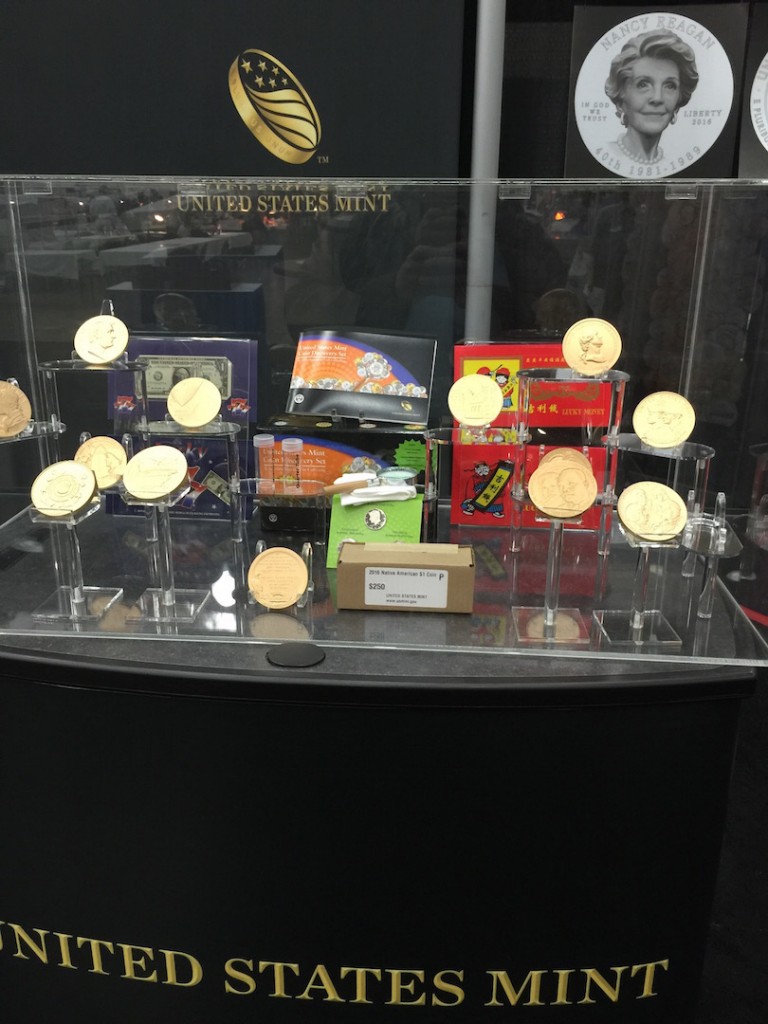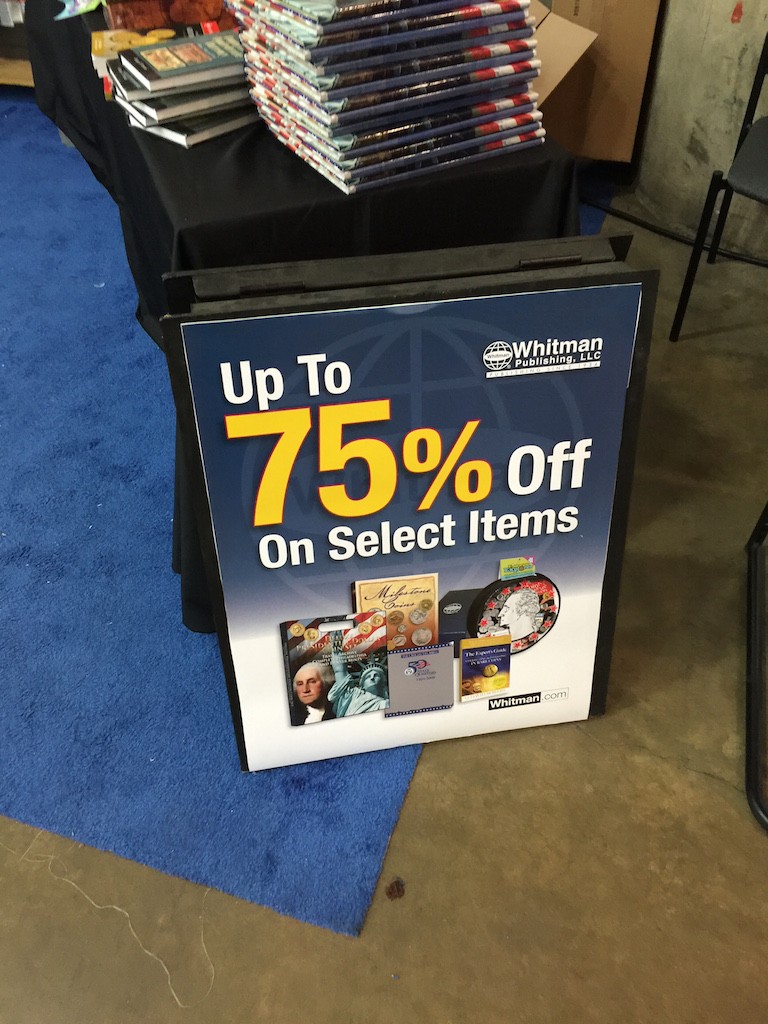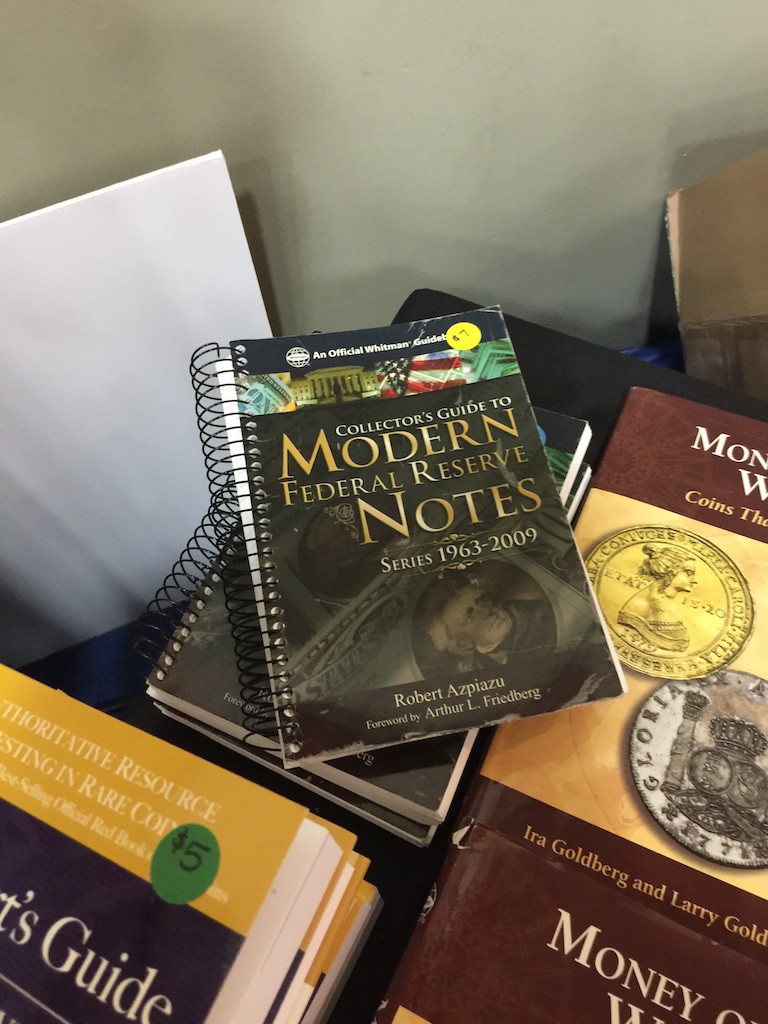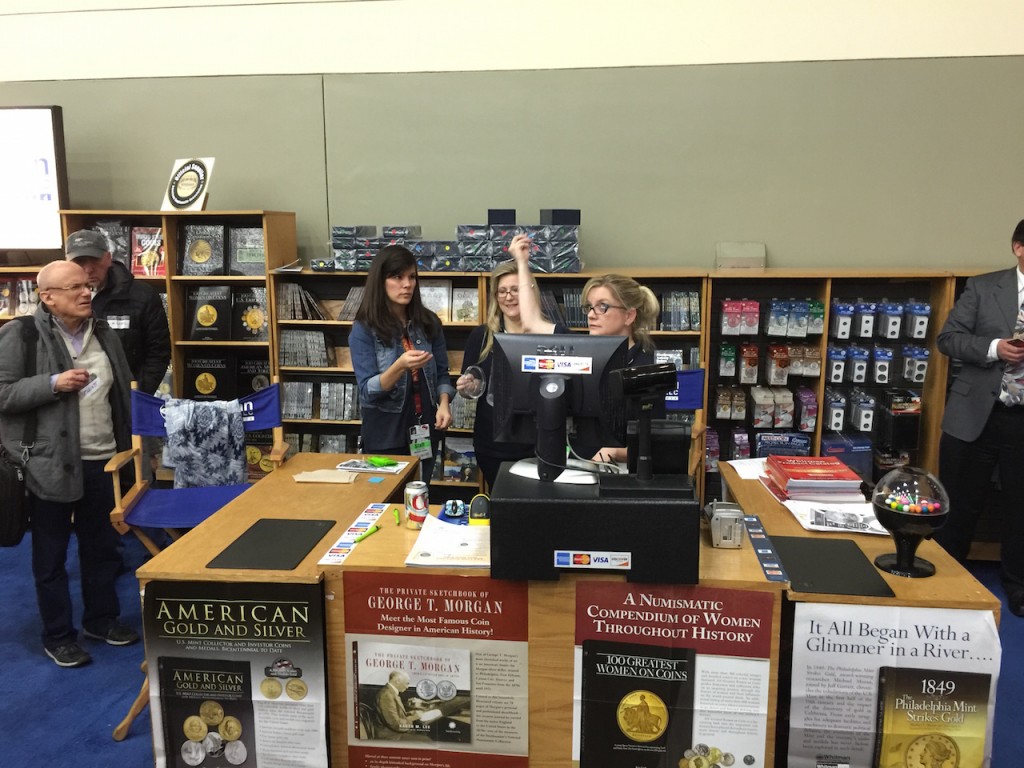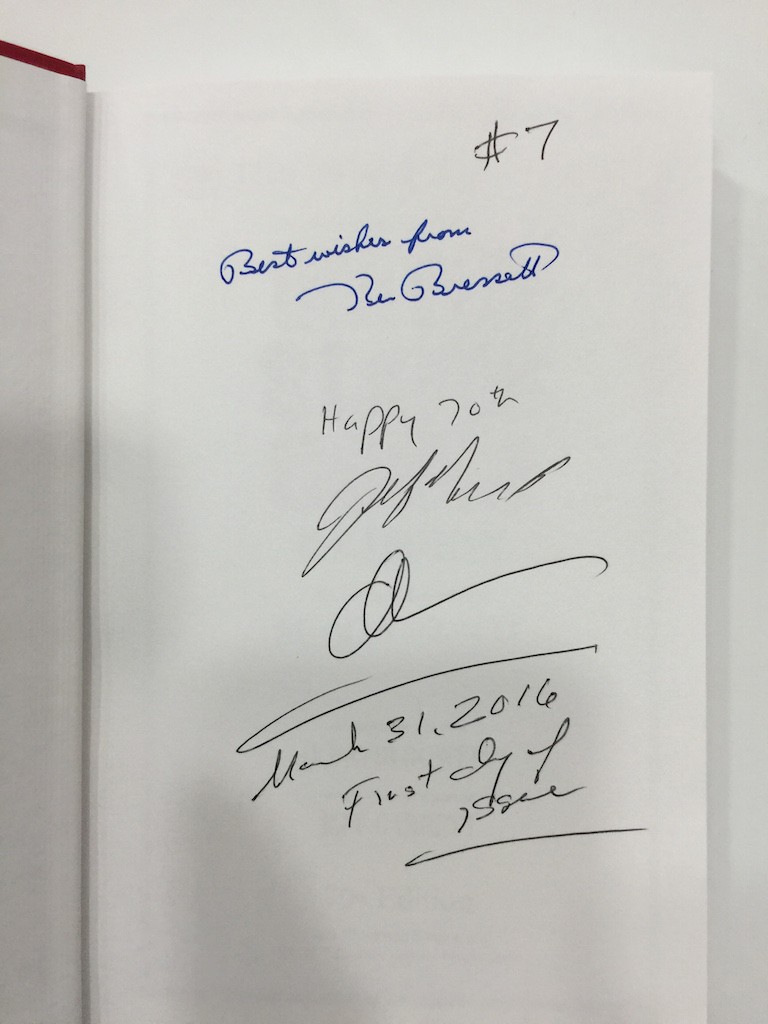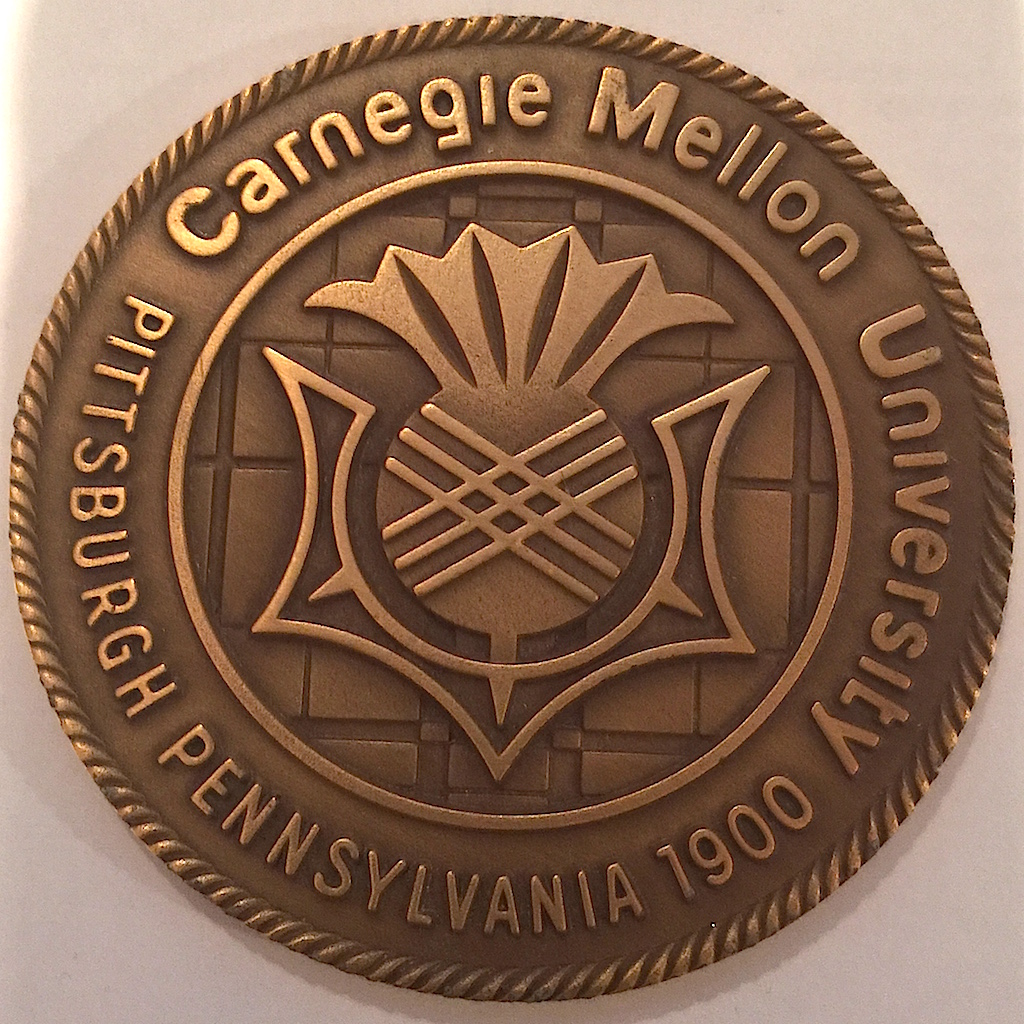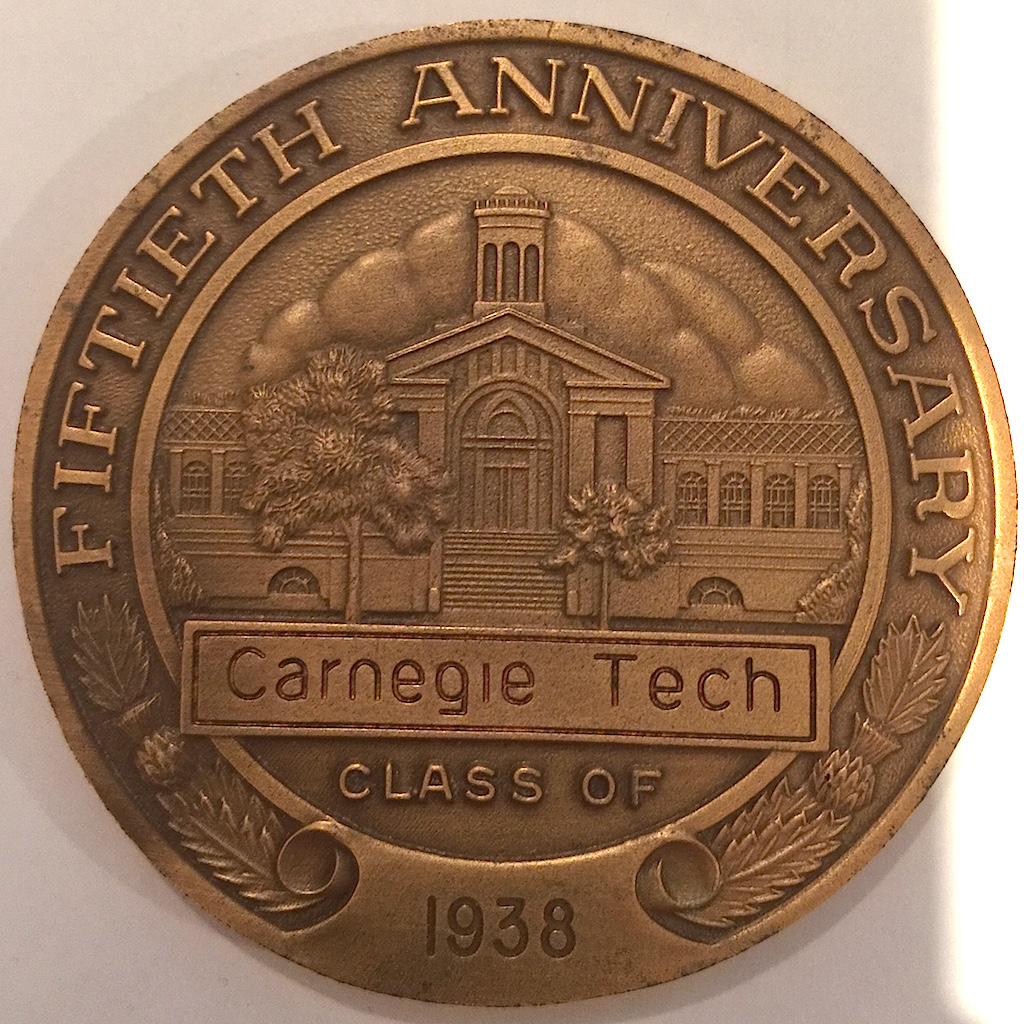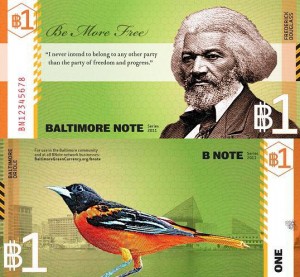A General, President, and the last Large Dollar Coin
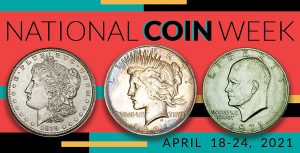 REMINDER: If you are not a member of the ANA, I will pay your 2021 Gold Membership dues for the first 25 readers of the Coin Collectors Blog who join during National Coin Week. All you have to do is click this link and use the Promotion Code NCW21SB when you check out.
REMINDER: If you are not a member of the ANA, I will pay your 2021 Gold Membership dues for the first 25 readers of the Coin Collectors Blog who join during National Coin Week. All you have to do is click this link and use the Promotion Code NCW21SB when you check out.The 1935 Peace Dollar was the last silver dollar struck for circulation. The dollar coin was not very popular because of its size and weight compared with the paper dollar. After silver prices rose and silver dollars were disappearing from circulation, there was a need to mint more coins.
By 1969, the primary customer using the dollar coin was Las Vegas casinos. To satisfy the demand, Mint Director Mary Brooks proposed to issue new dollar coins. Congress rejected Brooks’ proposal to issue silver-clad dollars. Eventually, Congress passed the law to use the same copper-nickel clad composition as other coins.
The selection of World War II general and President Dwight D. Eisenhower was easier to justify following his death on March 28, 1969. To honor Eisenhower, the reverse of the coin would celebrate the formation of the National Aeronautics and Space Administration (NASA), founded in 1958 during his administration. Mint Chief Engraver Frank Gasparro used the Apollo 11 mission insignia for the reverse design.
- Eisenhower Dollar obverse
- Eisenhower Dollar Reverse featuring the Apollo 11 mission insignia
- Bicentennial Dollar Type 2 (1976) Reverse
In 1975 and 1976, the reverse of the quarter, half-dollar, and dollar coins were redesigned for the United States Bicentennial. The U.S. Mint and the American Revolution Bicentennial Commission held a design competition for the redesign. Dennis R. Williams, a 22-year-old art student, submitted the winning design.
When engraving the dies, Gasparo simplified some of the design so that it would strike adequately. Initial tests did not show any problems. However, when the coins were struck in production, the letters on the copper-nickel circulating coins did not strike well. Gasparo changed the letters by making them thinner and sharper, giving collectors two types of Bicentennial Eisenhower Dollars. The Type 1 dollars were struck in 1975. The Type 2 dollars in 1976.
- Bicentennial Dollar Type 1 (1975) Reverse
- Bicentennial Dollar Type 2 (1976) Reverse
The original reverse with the Apollo 11 mission insignia returned on the 1977 and 1978 coins.
With the cost of copper and nickel rising and the desire to have more dollar coins in circulation, the Eisenhower Dollar was replaced by the Susan B. Anthony dollar. The Susie B. was smaller and used the Apollo 11 mission insignia on the reverse, but it was confused with the quarter and rejected by the public.
A complete collection of business strike Eisenhower Dollars consists of 16 coins. Uncirculated silver coins struck using a 40% silver-clad alloy was for four years. These are called “Blue Ikes” describing the Blue Packs similar to those used by the GSA for circulating silver dollars. An uncirculated silver-clad coin was available in the three-coin Bicentennial Silver Set. There are five silver-clad uncirculated coins.
From 1971-1974, the U.S. Mint issued silver-clad proof Eisenhower Dollars using the similar plastic lens that the GSA used for the Carson City Morgan silver dollars. The lenses were packed in brown boxes giving their nickname “Brown Ikes.” Copper-nickel clad proof coins were available in annual proof sets. An additional silver-clad proof coin was available in the three-coin Bicentennial Silver Proof Set. There are five silver-clad proof coins of the 11 proof coins struck by the U.S. Mint.
An advanced collector may consider expanding their collection to include the varieties of the 1972 dollars. Because of the difficulties in striking the silver-clad coins, the image of the Earth did not strike well. During the year, Gasparo tried twice to fix the problem giving the coin three distinct types.
A complete collection of Eisenhower Dollars consists of 32 coins. Because the coin was challenging to strike, finding coins in the highest grades is expensive. But collectors can assemble an attractive set for a reasonable amount of money. If you wanted to add the three varieties in 1972, the Type II version is scarcer and might be more expensive than the rest of the set and maybe a nice challenge.
The Gold Merc is coming
If you read my Baltimore show report, you might have noticed that I included images of the Mercury Dime 2016 Centennial Gold Coin. According to the U.S. Mint, the coin is scheduled to go on sale on April 21, 2016 at noon Eastern Time.
With a mintage limit of 125,000 and struck in West Point, the coin will be struck on a 24-karat (.999 pure) gold planchet. It will differ from the original Mercury Dime in that it will be dated 2016. On the reverse the coin will have the “W” mintmark since it will be struck in West Point, include “AU 24K” and “1/10 OZ.” to note that the coin will contain one-tenth ounce of gold. Otherwise, it looks exactly like Adolph A. Weinman’s design that was used from 1916 through 1945.
At 16.50 mm in diameter, the gold coin will be a little smaller than the 17.91 mm silver dime. The gold coin will be heavier (3.11 g) than the original that was made from 90-percent silver (0.7234 troy ounces).
To make this coin, the U.S. Mint is exploiting a loophole in the law that authorized the American Buffalo 24-Karat Bullion Gold Coins program (31 U.S.C. § 5112(q)). According to the law, after the first year of issue (2007), the Secretary can change the design of the coin as long as the design is reviewed by the Commission of Fine Arts and Citizens Coinage Advisory Committee. The U.S. Mint used this law to authorize the 2009 Ultra High Relief coin and the fifty year celebration of the Kennedy half dollar in 2014 with the dual date.
The original Winged Liberty “ Mercury” Dime was a silver coin produced as a result President Theodore Roosevelt’s “pet crime” where he thought U.S. coin design was hideous. Weinman was Augustus Saint-Gaudens’ student who is credited with finishing the work on Saint-Gaudens coin designs after the master sculpture’s death. It was not one of Weinman’s favorite works but it is beloved by collectors.
As a collector who has an almost complete collection of Mercury dime (missing the 1916-D), I was skeptical about the visual appeal of the coin in gold. When I open the folder, I see 30 years of silver coins. Since I try to keep my collection at extra fine (XF) or better, you can get used to seeing that beautiful silver color. When I saw the gold coin in a size that is close to the original dime in the presentation box at the Whitman Expo, I thought it made for a beautiful tribute.
Pricing of the coin will depend on the London Bullion Market Association (LBMA) afternoon price of gold on Wednesday, April 20. That number will be plugged into their pricing grid to determine the opening price of the coin. For example, the LBMA PM price of gold on April 14 is $1,233.85 per troy ounce. If this was the basis of the opening price, we would look up in the table for the price range $1,200.00 to $1,249.99. Since this is an uncirculated business strike coin struck under the American Buffalo act, the table shows that the coin would open at $194.00.
Using my example, this would give the coin a $70.61 or 36-percent numismatic premium over the spot price, which also takes into account U.S. Mint production costs (materials, labor, packaging, etc.).
If the LBMA PM price goes over $1,250 then the opening price of the coin will be $199.00. Being under $200.00 may give the market a psychological boost that may promote quicker sales. Then again, if the price of gold dips below $1,200.00, the coin will open at $189.00.
Putting on my prognosticator’s hat, I predict that the price of gold will go up enough that the opening price will be $199.00.
My trip to Balmer, Hon
Those who followed me on Twitter knows that I had a late start. We working stiffs do have weekend responsibilities that have to be taken care of before we can go out to play. Once I was able to complete my errands, I was able to travel north to Baltimore.
I may be one of the few people who are not from Baltimore who likes Baltimore. But going to Baltimore’s Inner Harbor area can be a lot of fun, even if it is frustrating trying to find parking. Then again, show me any city that does not have a parking problem and I will show you a city that is not as fun.
Once I was able to find parking I walked to the convention center. After entering in the early afternoon on Saturday I was struck by the number of empty tables that could be seen from the entry door. In all areas of the three convention center halls, the number of empty tables was surprising. I was also surprised to see a number of shared tables being half used.
As I walked around the convention center floor I was struck by the number of tables that were either never occupied or the dealer did not show up at all on Saturday. You can tell these tables from the others by the number of fliers left on the table. Some tables had rental cases with the keys in them showing that these tables were either unused or the dealer left early.
I recently learned that a table for the Baltimore show costs $750. Add the cost of travel, food, lodging, and the inventory, does the costs justify leaving and not trying to make money? When I discussed this with a regular dealer, I was told that some that are not having a good show will leave early to cut their losses.
Of the dealers that were left, there was a nice mix of items. For once, I did not get the impression that one type of coin was more popular than the other. In fact, I think this is the first show where bullion and bullion-related coins were not the focus. I was able to find American Silver Eagles without problem but finding some of the foreign bullion coins was a little more challenging.
Whitman, the sponsor of the show, had their own booth and was actually selling discounted items. In prior years, Whitman would sell their own products at full price but this time offered some discount. And they had a clearance table. I did not buy from the clearance table because they did not have anything I wanted but there were some nice and current items that were worth the value.
One thing Whitman did was to give away hardcover copies of the 70th Edition of the Red Book autographed by Ken Bressett and Jeff Garrett. All I had to do was fill out a ticket at the Whitman booth, return to the booth at the time of the drawing, and wait for them to give away the eight books being offered on Saturday. I think I was the fourth book given away.
Previously, I noted that the choices of numismatic literature has diminished. While the death of numismatic book dealer John Burns is a tragic story in and of itself, what has not happened is that someone has not stepped into that market. Aside from being intelligent and a character with a sharp wit, his inventory was so varied that I was always able to find something a little off-beat or out of the ordinary that was intriguing. If someone wants to move into numismatics but wants to occupy a different space, this might be something for you to get into.
The most fun thing I found was the dealer that used kiddie pools as their junk box. Rather than going through boxes or bins, they set up three kiddie pools and threw in a lot of low value slabs and some other items. They had a lot of slabs and it was interesting diving into the pools looking for something fun. Although I did not buy anything from the pools, I did buy some other coins and a non-numismatic related book from their discount table.Every show I try to find one neat item that is out of the ordinary. As I approached one table I noticed there were a few large brass medals on the table. I am intrigued by brass medals both for their size and a lot of the artwork. I have seen many brass medals with art that rival anything produced on canvas for their beauty. But this one was different in that it bore the local of Carnegie Mellon University, where I went to graduate school.
Carnegie Mellon was formed in 1967 when the Carnegie Institute of Technology (Carnegie Tech, founded in 1900) merged with the Mellon Institute of Industrial Research (founded in 1913). I earned a masters degree in one calendar year 1999-2000. Although I was an older student, it was a great experience for me and my (late) first wife.
The reverse of the medal is an image of Hamerschlag Hall, the first permanent building of Carnegie Tech and the home of the current College of Engineering. Around the rim celebrates the 50 Year Reunion with a space for the college which is having the reunion and the year being celebrated. Since the date engraved on the reverse is 1938, it was given to its previous owner in 1988. But that does not bother me. The front has the Carnegie Mellon logo and a great reminder of my good year in Pittsburgh.
The next Whitman Expo will be July 14-17. I hope the dealers that show up will be there if I have to spend the morning running errands.
Crowd funding a local currency
In the Spring of 2010 during the recent recession, a group representing business interests in Baltimore formed the Baltimore Green Currency Association. As part of their efforts to support local business, the BCGA created BNotes, a local currency that can be used at participating businesses in and around Baltimore. Currently, there are over 230 businesses accepting the BNote for goods and services.
Legally, the BNote is coupon representing the amount of money on its face and are redeemable at participating merchants. Consumers can receive BNotes as change for a transaction or may visit one of the official cambios (money exchange) locations to exchange dollars for BNotes. For every $10 that is exchanged for BNotes, you will receive a 10-percent bonus, which means if you exchange $10 you will receive BN11. You can also exchange BNotes for dollars at a reverse rate (receive $10 for every BN11 in BNotes).
The first BNotes were issued in April 2011 featuring the designs of Fredrick Douglas on the BN1 note and Edgar Allan Poe on the BN5 note. The reverse of the notes features a Baltimore oriole (the bird, not a ball player) on the $1 BNote and a raven on the reverse of the $5 BNote.
After five years, BCGA wants to create a new series of BNotes adding BN10 and BN20 notes to feature images of two notable Baltimore women. Douglas and Poe will remain on the current two notes. It is being advertised as the first time that women will appear on currency in the United States. Currency collectors know that Martha Washington on the front of the Series 1886 and 1891 $1 silver certificates. She also appeared on the back of the Series 1896 $1 silver certificate.
In order to raise the $15,000 needed to print a new series of BNotes, BGCA has started an Indiegogo campaign. To receive the new notes, you have to give $30 to receive a new BN1, BN5, and BN10 with the same serial numbers. For $50 you can get all four notes with the same serial number. There are other perks like a special tote, invitation to a cocktail party, framed notes, etc.
Although BGCA will announce the women to be featured on the notes later this month, it may be a good bet that Sen. Barbara Mikulski. Senator Barb, 79, is a Baltimore native who will retire after this session. Before serving five terms as senator, she served 5 terms representing Maryland’s Third District in the House of Representatives. Mikulski started her political career in 1971 as a member of the Baltimore City Council.
There have been previous attempts to create tokens using a crowd funding campaign, but this appears to be the first attempt to create a community currency in this manner. If this is a success, it could inspire other business communities to do something similar. For collectors, it is a unique, inexpensive collectible.
More dictionary updates
![]() Thanks to a few readers and some additional research, I edited a few of the Numismatic Dictionary entries and added a few words. The new words added are:
Thanks to a few readers and some additional research, I edited a few of the Numismatic Dictionary entries and added a few words. The new words added are:
The one I did not know but found the most interesting is fishscale. Fishscale was a nickname for the trime, the U.S. silver three-cent coin that was struck 1851-1873. In Canada, it was used as a nickname for their silver five-cent coin struck from 1870 through 1921. I could not find an origin of the nickname.
I am very happy that the Numismatic Dictionary has proven to be a useful resource!
As always, if you think there is a mistake or a word has been left out please contact me and let me know. Thank you!
March 2016 Numismatic Legislation Update
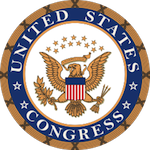 At the beginning of the month I usually summarize the numismatic-related legislation from the previous month. In March, congress spent two weeks on spring break and before that they were more concerned over what to do when the president nominated someone to the Supreme Court. Interestingly, the nomination came just as congress went on spring break.
At the beginning of the month I usually summarize the numismatic-related legislation from the previous month. In March, congress spent two weeks on spring break and before that they were more concerned over what to do when the president nominated someone to the Supreme Court. Interestingly, the nomination came just as congress went on spring break.
I visited one of my senators shortly after Merrick Garland’s nomination and the halls were empty. Although there was an attempt to have him speak with members of the senate, the building I was in was a virtual ghost town. Many of the staffers went on break to escape the general lunacy.
That does not mean there was no business. Some bills were introduced including the nited States Semiquincentennial [sic] Commission Act of 2016 (H.R. 4875). If passed, the bill will create a commission similar to the American Revolution Bicentennial Administration to celebrate the 250th anniversary of the signing of the Declaration of Independence in 2026.
As a young numismatist in 1976, there was ample opportunity to collect many tokens and medals celebrating the nation’s bicentennial. If you want proof of that, just search eBay for the number of bicentennial numismatic-related items for sale.
According to the bill, it encourages “Federal agencies to integrate the celebration of the Semiquincentennial [sic] into the regular activities and execution of the purpose of the agencies through such activities as the issuance of coins, medals, certificates of recognition, stamps, and the naming of vessels.”
Interestingly, “Semiquincentennial” does not appear to be a proper word. A “ quincentennial” would be used to celebrate the 500th anniversary of an event. I do not believe this is a proper use of the prefix “semi.” According to Wikipedia, a proper term would be “sestercentennial.”
To express 2½ in Latin it would be expressed as “half-three”. The term relates to being halfway [from the second] to the third integer. In Latin this is “Sestertius” which is a contraction of semis (halfway) tertius (third)—hence Sestercentennial.
Wikipedia notes that Semiquincentennial has been used as recently as 2015 by Brown University. Bicenquinquagenary was used by Princeton University; Reading, Pennsylvania; and Washington and Lee University.
If these places cannot decide, then maybe let congress do so. They could do worse things!

